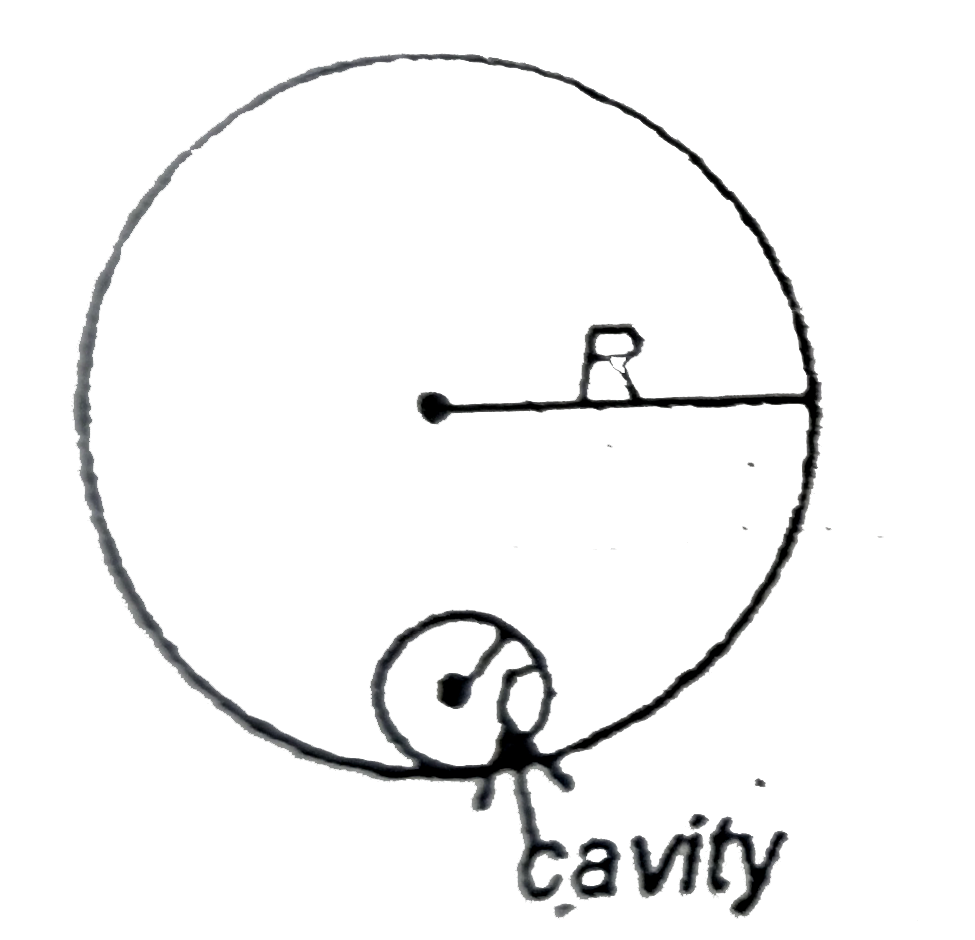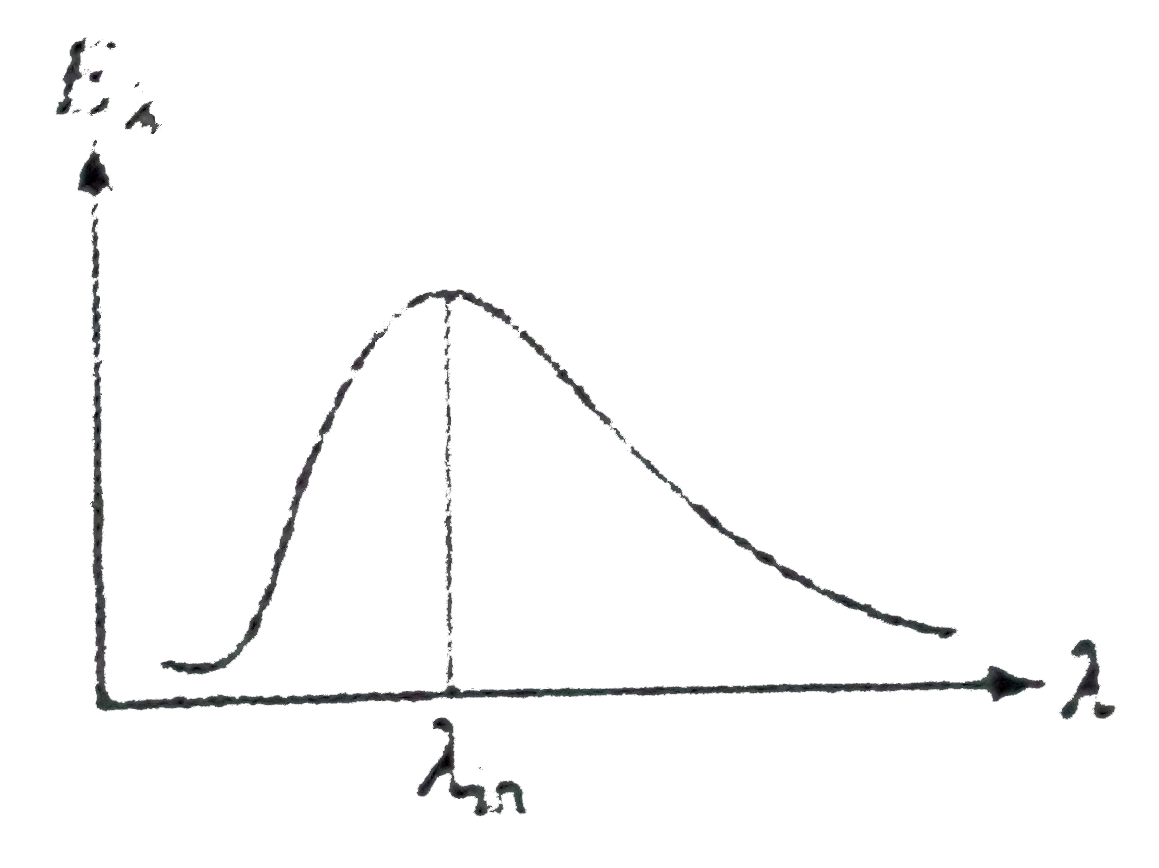A spherical solid blakc body of radius 'r' radiates power 'H' and its rate of cooling is 'C'. If density is constant then which of the following is/are true.
H∝r and c∝r2
H∝r2 and c∝1r
H∝r and c∝1r2
H∝r2 and c∝r2
The correct Answer is:B
To solve the problem, we need to analyze the relationships between the power radiated by a spherical solid black body, its radius, and the rate of cooling. Let's break it down step by step.
Step 1: Understand the Power Radiated
The power radiated by a black body can be expressed using the Stefan-Boltzmann law:
H=σeAT4
where:
- H is the power radiated,
- σ is the Stefan-Boltzmann constant,
- e is the emissivity (which is 1 for a black body),
- A is the surface area,
- T is the absolute temperature.
Step 2: Calculate the Surface Area of the Sphere
For a sphere, the surface area A is given by:
A=4πr2
where r is the radius of the sphere.
Step 3: Substitute the Surface Area into the Power Equation
Substituting the surface area into the power equation, we get:
H=σ(1)(4πr2)T4
This simplifies to:
H=4πσr2T4
From this equation, we can see that the power H is proportional to the square of the radius r:
H∝r2
Step 4: Relate Power to Rate of Cooling
The rate of cooling C can be expressed as:
C=dTdt
Using the relationship between power and cooling, we can express power in terms of mass and specific heat:
H=msdTdt
where:
- m is the mass,
- s is the specific heat capacity.
Step 5: Express Mass in Terms of Density and Volume
The mass m can be expressed as:
m=ρV
where ρ is the density and V is the volume of the sphere. The volume of a sphere is given by:
V=43πr3
Thus,
m=ρ(43πr3)
Step 6: Substitute Mass into the Cooling Rate Equation
Substituting for mass in the cooling rate equation gives:
H=ρ(43πr3)sdTdt
Rearranging this, we find:
dTdt=Hρ(43πr3)s
Step 7: Analyze the Rate of Cooling
From the above equation, we can see that the rate of cooling C is inversely proportional to the cube of the radius r:
C∝1r3
Conclusion
From our analysis, we have established two key relationships:
1. The power H is proportional to r2.
2. The rate of cooling C is inversely proportional to r3.
Final Answer
- True Statements:
- H is proportional to r2.
- C is inversely proportional to r3.
The power radiated by a black body can be expressed using the Stefan-Boltzmann law:
H=σeAT4
where:
- H is the power radiated,
- σ is the Stefan-Boltzmann constant,
- e is the emissivity (which is 1 for a black body),
- A is the surface area,
- T is the absolute temperature.
For a sphere, the surface area A is given by:
A=4πr2
where r is the radius of the sphere.
Substituting the surface area into the power equation, we get:
H=σ(1)(4πr2)T4
This simplifies to:
H=4πσr2T4
From this equation, we can see that the power H is proportional to the square of the radius r:
H∝r2
The rate of cooling C can be expressed as:
C=dTdt
Using the relationship between power and cooling, we can express power in terms of mass and specific heat:
H=msdTdt
where:
- m is the mass,
- s is the specific heat capacity.
The mass m can be expressed as:
m=ρV
where ρ is the density and V is the volume of the sphere. The volume of a sphere is given by:
V=43πr3
Thus,
m=ρ(43πr3)
Substituting for mass in the cooling rate equation gives:
H=ρ(43πr3)sdTdt
Rearranging this, we find:
dTdt=Hρ(43πr3)s
From the above equation, we can see that the rate of cooling C is inversely proportional to the cube of the radius r:
C∝1r3
From our analysis, we have established two key relationships:
1. The power H is proportional to r2.
2. The rate of cooling C is inversely proportional to r3.
- True Statements:
- H is proportional to r2.
- C is inversely proportional to r3.
Topper's Solved these Questions
- BOOK - RESONANCE ENGLISHCHAPTER - HEAT TRANSFEREXERCISE - Exercise-21videos
HEAT TRANSFER
- BOOK - RESONANCE ENGLISHCHAPTER - HEAT TRANSFEREXERCISE - Exercise-31videos
HEAT TRANSFER
- BOOK - RESONANCE ENGLISHCHAPTER - HEAT TRANSFEREXERCISE - Exercise-11videos
HEAT TRANSFER
- BOOK - RESONANCE ENGLISHCHAPTER - GRAVITATIONEXERCISE - Exercise21videos
GRAVITATION
- BOOK - RESONANCE ENGLISHCHAPTER - KINEMATICSEXERCISE - Exercise65videos
KINEMATICS
Similar Questions
A spherical black body of radius n radiates power p and its rate of cooling is R. then.
View SolutionIf a, b, c ∈ R, then which one of the following is true:
View SolutionA thin-walled spherical conducting shell S of radius R is given charge Q. The same amount of charge is also placed at its center C. Which of the following statements are correct?
View SolutionWe consider the radiation emitted by the human body. Which of the following statements is true
View SolutionA spherical black body with radius 12 cm radiates 450 w power at 500 K. If the radius is halved and the temperature doubled, the power radiated in watts would be
View SolutionA spherical black body with radius 12 cm radiates 640 w power at 500 K. If the radius is halved and the temperature doubled, the power radiated in watts would be
View SolutionThe radiations emitted by the sun are analyzeed and the spectral energy distribution curve is plotted. as shown. The radius of the sun is R, the earth is situated a distance 'd' from the sun. Treat the sun as perfectly black body which radiates power at constant rate fill till its store of hydrogen gets exhausted. (Stefan's constant =σ, Wien's constant =b, speed of light =c)

If the earth is at a distance 'd' from the sun the intensity of light falling on the earth (called solar constant S) isView SolutionA solid sphere of radius R has a spherical cavity of radius r as shown in the figure. If the volume charge density σ is uniformly distributed over the whole volume of the sphere, then electric field strength at the centre of the sphere will be
 View Solution
View SolutionThe radiations emitted by the sun are analyzed and the spectral energy distribution curve is plotted. as shown. The radius of the sun is R, the earth is situated a distance 'd' from the sun. Treat the sun as perfectly black body which radiates power at constant rate fill till its store of hydrogen gets exhausted. (Stefan's constant =σ, Wien's constant =b, speed of light =c)

Assume the sun produces energy only by nuclear fusion of hydrogen nuclei and the fraction of nuclear mass of hydrogen that can be converted to energy is η. How long will the sun keep on emittied the energy if the mass of hydrogen at present in Sun's core is m?View SolutionA spherical body of radius 10cm radiates 300W at 227°C. If the radius is doubled and temperature is remain same, the power radiated will be
View Solution
